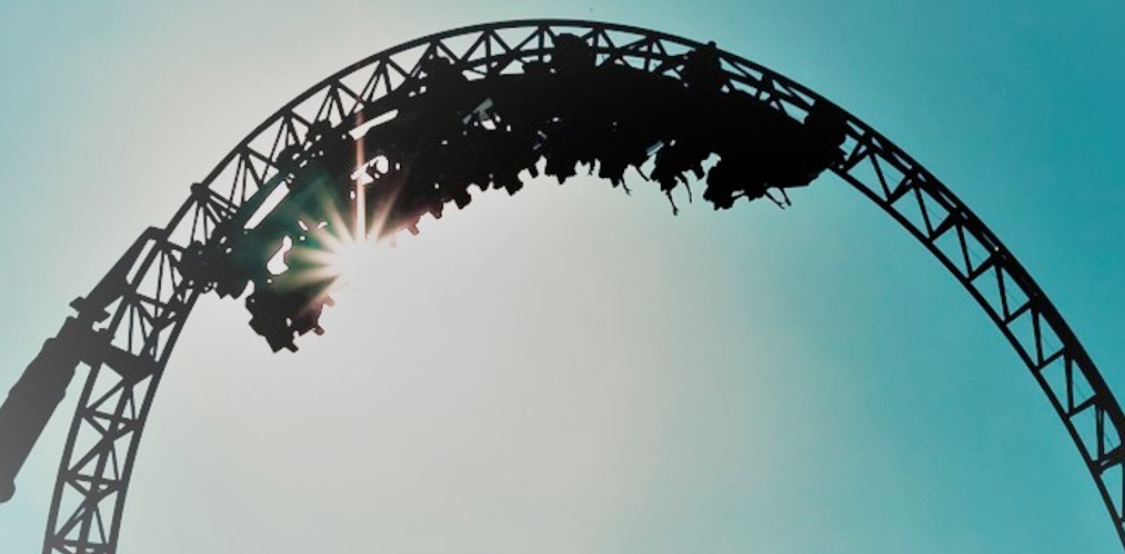
Sugar Crash: Part 2 - Stop the Rollercoaster
From Sugar Rush to Sugar Crash
In the first part on the topic "Sugar Crash", you already learned what happens to our bodies after excessive sugar intake. After the sugar "high," i.e., the absorption of a lot of sugar into the blood, the excessive production of insulin leads to the "crash" – the blood sugar level shoots back down like a yo-yo, landing even lower this time.
The Blood Sugar Rollercoaster
This illustration wonderfully shows what happens when you succumb to the sweet temptation again during a blood sugar and performance dip. If you then reach for the next sugary snack or drink to get out of the predicament, the UP from sugar rush to DOWN sugar crash starts all over again.
This constant UP and DOWN is called the "blood sugar rollercoaster." In the short term, this leads to sometimes severe performance fluctuations, and in the long term, severe health consequences such as metabolic syndrome or type 2 diabetes threaten.
But how can we stop the blood sugar rollercoaster?
The Way Out of the Rollercoaster
The solution: scrutinize your diet and lifestyle and take action!
1. Regular endurance and strength training
At least 30 minutes of physical activity daily (including brisk walking) and moderate to intense training several times a week are among the top factors in fighting metabolic syndrome and type 2 diabetes. Muscle contraction can increase insulin sensitivity, leading to less insulin being needed to achieve an effect.
2. Nutrition: Prefer complex carbohydrates and fiber-rich foods
Different foods influence blood sugar and insulin levels to varying degrees. This is also expressed in the so-called glycemic index (GI). The higher the impact on blood sugar, the higher the GI.
The higher the degree of processing, the faster our blood sugar level reacts - see white flour products, fast food, soft drinks, and sweet snacks. All products with a very high glycemic index.
Unprocessed carbohydrate sources such as whole grains, whole fruits & vegetables (note: no juices or packaged smoothies), and legumes have a lower GI and lead to a slow and steady increase in blood sugar levels. This gives you constant energy, long-lasting concentration, and better satiety after a meal, as these fiber-rich foods delay the sugar flow into the blood.
Warning: Fructose!
Fruit sugar was long downplayed as a "healthy" substitute for table sugar. Naturally occurring in fresh fruits and vegetables, it poses no problem - but it is now used almost everywhere in the food industry to sweeten or preserve foods. Watch out for labels: glucose-fructose syrup, fruit sweeteners, corn syrup, etc., should be avoided, as should fruit concentrates and liters of fruit smoothies. A high fructose content in the diet correlates with an increased risk of insulin resistance!
Think Green!
Regular consumption of cinnamon and green tea is also associated with positively influencing insulin sensitivity. Additionally, these substances stimulate metabolism and thermogenesis - an ideal addition to your daily diet!
Green tea keeps you, like the green regeneration boost Regeneraid, focused longer without the crash of energy drinks (and without the calories).
Guarana, an ingredient in Regeneraid, is a popular and natural caffeine source that has a long-lasting stimulating effect ("slow-release caffeine") and can promote concentration. The indigenous people of the Amazon already knew this and used these invigorating seeds to support their hunting trips.
Health through intelligent nutrition - DR.OWL NutriHealth
Sources
- http://www.nutritiontotheedge.com/how-blood-sugar-affects-your-health-and-energy/
- Joen CY, Lokken RP, Hu FB, van Dam RM: Physical activity of moderate intensity and risk of type 2 diabetes: a systematic review. Diabetes Care 30:744–752, 2007
- Borghouts LB, Keizer HA: Exercise and insulin sensitivity: a review. Int J Sports Med. 2000 Jan;21(1):1-12.
- Qin, B, et al. Cinnamon extract potentiates in vivo insulin-regulated glucose utilization via enhancing insulin signaling in rats. Diabetes Research and Clinical Practice 2003 62:139-148.
- Ashida et al, Anti-obesity actions of green tea: Possible involvements in modulation of the glucose uptake system and suppression of the adipogenesis-related transcription factors. Biofactors 2004; 22(1-4):135-40.
- Thresher et al, Comparison of the effects of sucrose and fructose on insulin action and glucose tolerance. AJP- Regu Physiol October 2000 vol.279 no.4

